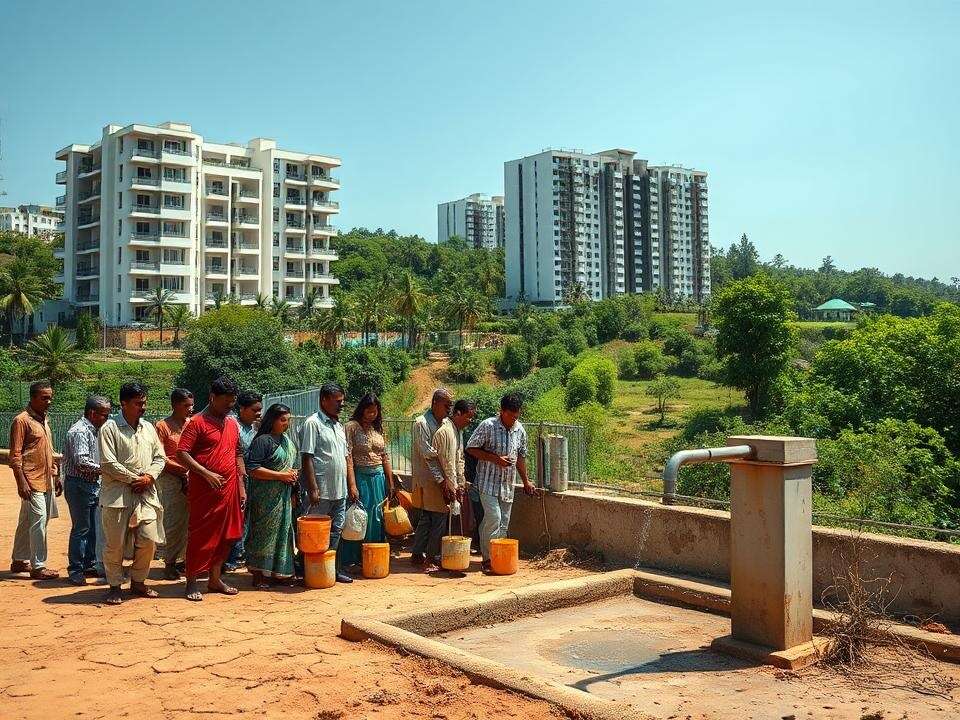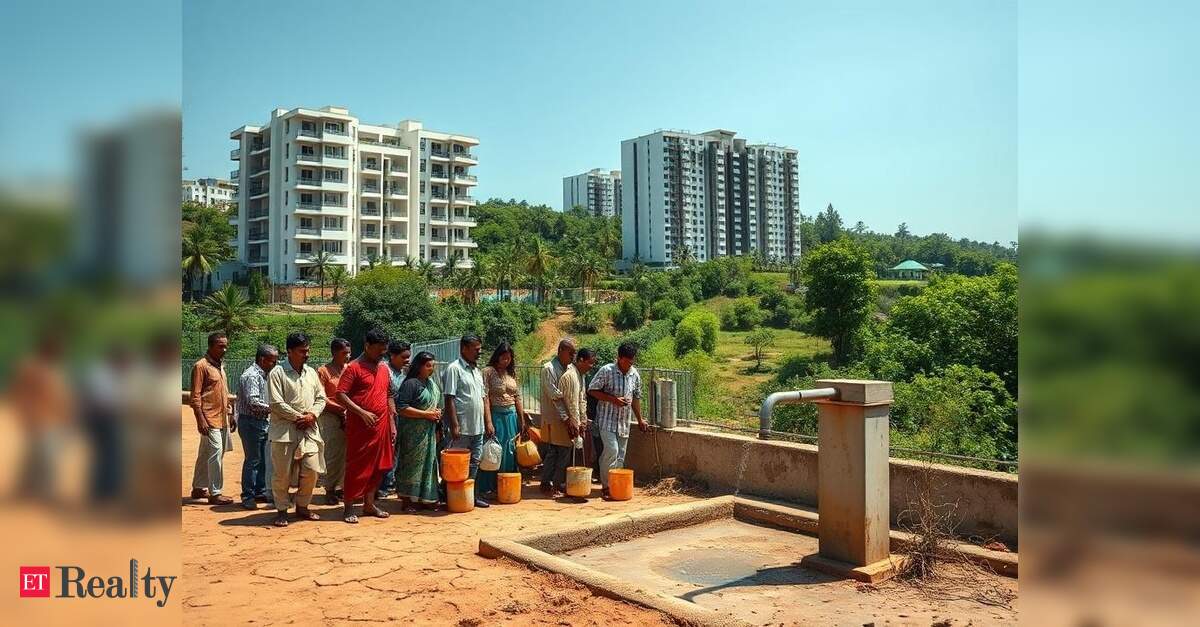
PANAJI: In a state grappling with water scarcity in both urban and rural areas, the town and country planning (TCP) department continues to grant technical approvals for new housing and tourism projects daily, overlooking a critical factor—access to water.
Rapid urban development, exacerbated by uncontrolled groundwater extraction and increasing tourist numbers, has left Goa’s water infrastructure in distress. Despite this escalating crisis, various government departments operate independently. Clearances for extensive housing developments and luxury resorts are issued without consulting the public works department (PWD) or the water resources department (WRD), which are responsible for ensuring residents have adequate water supply.
The situation is stark in Panaji, where the capital currently faces a shortfall of 2 million litres per day (MLD) in its water supply—equivalent to the needs of a ward like Mala. Recently, the state approved a 587-room luxury resort in Miramar. When questioned about parking and water needs at a Goa Tourism Board meeting, officials dismissively replied, “Not our headache.”
Goa produces 695 MLD of treated drinking water daily, yet demand has already surpassed this figure by 62 MLD. In Siolim alone, the shortfall reaches 7 MLD, which is over half of the village’s requirement. The disparity is glaring and worsening.
Estimates suggest that an urban household in Goa consumes approximately 170 litres of water per person per day. The deficit in Panaji could impact an entire residential area. PWD officials express frustration over the strain on the existing system.
The 11 new water treatment plants under construction—costing Rs 1,023 crores and expected to add 248 MLD to the system—cannot keep up with the numerous construction licenses and technical approvals granted by the TCP. The state’s water demand is rising due to an estimated resident population of 1.9 million and an annual influx of 10 million tourists.
Since 2020, the PWD has turned down approval for just 18 multi-dwelling projects—10 in North Goa and 8 in South—due to insufficient infrastructure. The largest of these was a 679-unit project in Sancoale.
Despite these rejections, there’s no effective mechanism to prevent the TCP from issuing technical clearances.
“Many projects proceed without the necessary NoC from the PWD. There must be a legal requirement for the TCP to verify water availability before issuing approvals,” stated a senior PWD official. He noted that developers are constructing in hilly areas, often without existing pipelines, and expect the government to provide required infrastructure.
“Why should public funds be spent on projects that lack basic access?” he questioned.
Until recently, obtaining an occupancy certificate did not require a water connection. This policy was amended last year due to pressure from the PWD, which hopes that the new rule will force developers to secure water availability certificates beforehand.
However, there’s a catch. “The government collects infrastructure taxes from builders, but when it comes time to deliver electricity and water connections, they make excuses. Developers face immense pressure to meet deadlines, knowing buyers can turn to RERA for compensation if delays occur. Panchayats and departments often exploit this,” remarked a real estate firm’s managing director.
“If a panchayat denies permission due to a water shortage, the appeal goes to the Directorate of Panchayats, which frequently overturns these decisions,” noted a panchayat member from North Goa. He emphasized that increasing FAR limits in villages—from 60% to 80%—and approvals from the Investment Promotion Board for large projects have weakened the authority of panchayats.
Despite overwhelming evidence of water scarcity, the TCP continues to approve large-scale projects—including resorts, second homes, and gated communities—without consulting the necessary infrastructure departments.




